|
Ewa ANDRZEJEWSKA



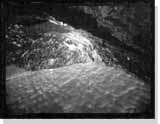
Janina HOBGARSKA


Piotr KOMOROWSKI


Wojciech ZAWADZKI
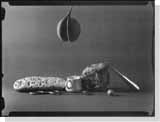
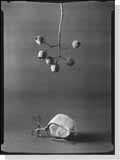
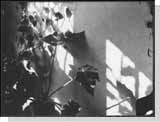
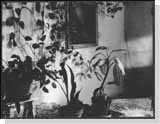
| Let us again focus our attention on the basic photographic process: recording operation of light. Presence of matter from which light has been reflected or through which it has been filtered is thus preserved. Changing the simplest parameter s, such as intensity of light admitted into a camera and duration of light’s operation upon a light-sensitive surface, we can move between two poles: an overdose of light that dazzles us and scarcity of light that leaves no visible trace. In photography those poles are represented by uniform white and black planes where nothing can be discerned. Only photographic record, contained between those poles, can re-create an illusion of space in which we move every day as physical persons. Although photography is only an imitation of three-dimensional space converted into a flat composition of lines and patches, an impression of encoun-tering the real world is so strong that it cannot be disturbed even by some technical faults or the reduction of various natural stimuli to sheer visual experiences.
Fixing the reaction of a light-sensitive surface to the light to which it is exposed at a certain moment is the fundamental photographical meaning, compared to which all other meanings (senses of a picture) seem secondary, no matter how seriously we treat the objectivity of this "objective" medium. For the meanings, that we deduce from various situations arrested in frames by means of notions, are relative. They result from one’s interpretation of history, emotions, ethical assessments, etc. Only commentaries do tell us, for instance, how important a person shown in a portrait is, to what extent an act of violence is justified, what is the cause of what result, and so forth. The light that constitutes a photographic picture is completely neutral to those interpretations and is reflected from various surfaces in compliance with laws of optics, regardless the meanings placed on objects by people. Creators of photographic pictures made attempts at improving that nature’s "fault" and correcting, by means of technical manipulations, to the senses desired by them or someone else. But can one afford a neutral look at an objective world? Apart from all the ideologies that steer our perception, there is also need for expressing one’s personal perception of the world that incites a photographer to a creative action, independently of other needs. Does it mean that recording and watching the world through photography has to be equally deformed as everyday cursory perception of reality by means of eyes only? That objectivity of photography, questioned even in scientific procedures, is the more so an empty slogan in art?
One could arrive at such conclusions if each element in photographic message were treated sepa-rately. But objectivity, apart from that it functions as an abstract notion, can refer to any method at the disposal of human consciousness which tries to examine the obscure and ourselves and, on the other hand, what it tries to express through "subjective" manifestations. Therefore, those, who take photographs and who are sensitive to paradoxes hidden in the mechanism of perceiving and exploring the world, try to express its various aspects. To what degree photographers "deform" or interpret what a camera gives them is beside the question. Eventually, subjectivity itself may play the role of an objective fact, and a lens is, after all, a creation of human mind and hands. The core of the matter consists in disclosing the interaction of various, often contradictory, factors at the moment of their clash. Photography has always been interpreted in contexts of numerous conventions: art, philosophy, politics, but that momentary flash of light which discloses the presence of matter itself, makes everything as if exposed to some other "objective" criterion, transmitting those meanings into another dimension.
Obviously, each photograph can be, and most frequently is, interpreted in a hackneyed fashion, subordinate to certain convention. That is why photographers, who are sensitive to some deeper senses offered by this medium, take certain measures to dissuade viewers from superficial interpret-ing. The four photographers presented at this exhibition, Ewa Andrzejewska, Janina Hobgarska, Piotr Komorowski, Wojciech Zawadzki, do take such measures. One is the choice of themes of interpreta-tions. Most often these are various places - unfrequented ones: lofts, nooks, interiors, full of ordinary, worn-out things, or landscapes whose poetic power is derived from blend of order and destruction. Such choices seem to substitute the absence of valuation that is characteristic of operation of light. Another means is the method of taking photographs which refers to the basics of photography, both in its historical and technical or philosophical sense. Stylising and quoting and erudition connected with them are beside the point. The point is to present directly the parameters of a situation in which a photographer finds himself and who confronts the mechanism of his own psyche (which is little known) with the mechanism of the material, "objective" world (also little known) and with the prin-ciples of photographic technique (best known). In this way the greatest power of photography manifests itself, due to which even a simple photograph with banal contents fascinates us and does not become outdated.
That power of influence compensates for the doubts, existent along with the history of photography, whether photography belongs to art. Perhaps, it is those doubts that constitute those power. For if we regard art as an expression of imagination shown through technical skills, then photography, attempting at conforming to those standards, will soon become pretentious and confined to its own medium as far as the liberty to express is concerned. However, referring to its basics, photography may attain timeless quality by condensing premises of problems that we cannot tackle rationally. Whence, l consider it unjustified to speak of the decline of photography as an artistic means of expression, which is supposed to be caused by rapid development of electronic media endowed with creative capabilities. The present situation seems to be like that 150 years ago when photography was born and, subsequently, painting was proclaimed to be dead. Although that used to be often repeated, painting throve and so far it has been the most effective and prestigious art medium. The incentive to this vitality has been nothing else but photography. The situation of photography in the face of new media may prove similar. In fact, they do not strip photography of its sense, nor can they take over its function. As this exhibition demonstrates, classical photographic form is not only a historical phenomenon, but also a specific kind of coexistence of the basic mechanisms of perceiving the world that are typical of man. It is not unlikely, that in future some other advantages of photogra-phy, hidden so far, will come to light.
Each of the four photographers shows an individual style. It is hard to discover any common principles that govern the form or the understanding of objectivity. On the other hand, numerous features of their photographs make them artistically related to each other. As compared to the wide diversity and freedom that have recently possessed photography and art in general, those works verge upon each other in many respects. This is a matter of conscious choice, based on the issues discussed above.
Adam Sobota
|